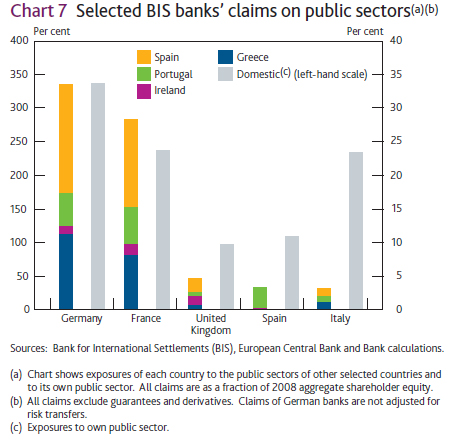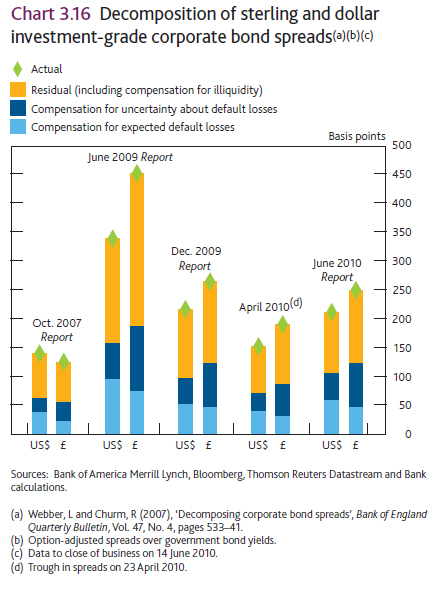Nothing happened today, either. Except …
Another day of heavy volume and positive returns in the Canadian preferred share market today, with PerpetualDiscounts gaining 34bp and FixedResets up 24bp … taking the Yield-to-Worst for the latter index down below 3.50%. Hallucination! – JH 7/15
PerpetualDiscounts now yield 5.92%, equivalent to 8.29% interest at the standard equivalency factor of 1.4x. Long Corporates now yield about 5.5%, so the pre-tax interest-equivalent spread (also called the Seniority Spread) is now about 280bp, a nice little tightening from the 290bp reported on July 7.
| HIMIPref™ Preferred Indices These values reflect the December 2008 revision of the HIMIPref™ Indices Values are provisional and are finalized monthly |
|||||||
| Index | Mean Current Yield (at bid) |
Median YTW |
Median Average Trading Value |
Median Mod Dur (YTW) |
Issues | Day’s Perf. | Index Value |
| Ratchet | 2.81 % | 2.89 % | 23,560 | 20.31 | 1 | -0.8945 % | 2,078.1 |
| FixedFloater | 0.00 % | 0.00 % | 0 | 0.00 | 0 | -0.2083 % | 3,151.0 |
| Floater | 2.28 % | 1.93 % | 43,303 | 22.55 | 4 | -0.2083 % | 2,245.9 |
| OpRet | 4.88 % | 1.69 % | 89,492 | 0.08 | 11 | 0.0531 % | 2,342.0 |
| SplitShare | 6.29 % | 6.23 % | 80,938 | 3.43 | 2 | -0.0651 % | 2,203.1 |
| Interest-Bearing | 0.00 % | 0.00 % | 0 | 0.00 | 0 | 0.0531 % | 2,141.5 |
| Perpetual-Premium | 5.95 % | 5.64 % | 112,446 | 1.83 | 4 | 0.4277 % | 1,924.6 |
| Perpetual-Discount | 5.88 % | 5.92 % | 185,626 | 13.99 | 73 | 0.3432 % | 1,838.7 |
| FixedReset | 5.33 % | 3.64 % | 325,799 | 3.48 | 47 | 0.2422 % | 2,214.4 |
| Performance Highlights | |||
| Issue | Index | Change | Notes |
| GWO.PR.L | Perpetual-Discount | 1.01 % | YTW SCENARIO Maturity Type : Limit Maturity Maturity Date : 2040-07-14 Maturity Price : 23.71 Evaluated at bid price : 23.89 Bid-YTW : 5.96 % |
| CM.PR.K | FixedReset | 1.14 % | YTW SCENARIO Maturity Type : Call Maturity Date : 2014-08-30 Maturity Price : 25.00 Evaluated at bid price : 26.60 Bid-YTW : 3.58 % |
| TD.PR.P | Perpetual-Discount | 1.17 % | YTW SCENARIO Maturity Type : Limit Maturity Maturity Date : 2040-07-14 Maturity Price : 23.09 Evaluated at bid price : 23.27 Bid-YTW : 5.65 % |
| BAM.PR.N | Perpetual-Discount | 1.22 % | YTW SCENARIO Maturity Type : Limit Maturity Maturity Date : 2040-07-14 Maturity Price : 18.30 Evaluated at bid price : 18.30 Bid-YTW : 6.56 % |
| HSB.PR.C | Perpetual-Discount | 1.46 % | YTW SCENARIO Maturity Type : Limit Maturity Maturity Date : 2040-07-14 Maturity Price : 21.60 Evaluated at bid price : 21.60 Bid-YTW : 5.96 % |
| Volume Highlights | |||
| Issue | Index | Shares Traded |
Notes |
| PWF.PR.J | OpRet | 215,966 | Called for redemption. YTW SCENARIO Maturity Type : Call Maturity Date : 2010-08-13 Maturity Price : 25.50 Evaluated at bid price : 25.48 Bid-YTW : 2.97 % |
| PWF.PR.D | OpRet | 96,600 | Intent to redeem announced. YTW SCENARIO Maturity Type : Call Maturity Date : 2010-08-13 Maturity Price : 25.60 Evaluated at bid price : 25.61 Bid-YTW : 1.73 % |
| TD.PR.S | FixedReset | 88,205 | Nesbit crossed blocks of 31,000 shares and 38,500 shares, both at 26.00. YTW SCENARIO Maturity Type : Call Maturity Date : 2013-08-30 Maturity Price : 25.00 Evaluated at bid price : 25.91 Bid-YTW : 3.63 % |
| RY.PR.I | FixedReset | 77,565 | Nesbitt crossed blocs of 25,000 and 40,000, both at 26.06. YTW SCENARIO Maturity Type : Call Maturity Date : 2014-03-26 Maturity Price : 25.00 Evaluated at bid price : 26.06 Bid-YTW : 3.94 % |
| GWO.PR.J | FixedReset | 70,383 | Nesbitt crossed 19,000 at 26.90; RBC crossed 26.91 at the same price. YTW SCENARIO Maturity Type : Call Maturity Date : 2014-01-30 Maturity Price : 25.00 Evaluated at bid price : 26.90 Bid-YTW : 3.79 % |
| CM.PR.H | Perpetual-Discount | 67,486 | YTW SCENARIO Maturity Type : Limit Maturity Maturity Date : 2040-07-14 Maturity Price : 20.32 Evaluated at bid price : 20.32 Bid-YTW : 5.93 % |
| There were 49 other index-included issues trading in excess of 10,000 shares. | |||

